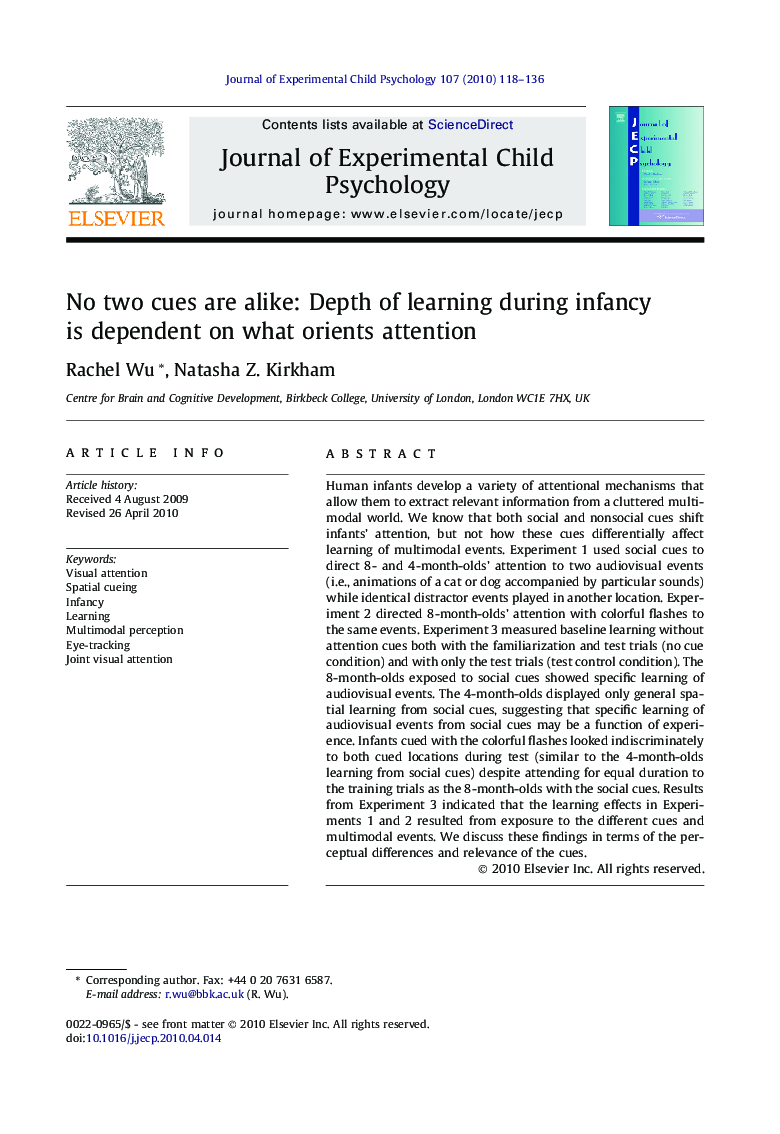| Article ID | Journal | Published Year | Pages | File Type |
|---|---|---|---|---|
| 918612 | Journal of Experimental Child Psychology | 2010 | 19 Pages |
Human infants develop a variety of attentional mechanisms that allow them to extract relevant information from a cluttered multimodal world. We know that both social and nonsocial cues shift infants’ attention, but not how these cues differentially affect learning of multimodal events. Experiment 1 used social cues to direct 8- and 4-month-olds’ attention to two audiovisual events (i.e., animations of a cat or dog accompanied by particular sounds) while identical distractor events played in another location. Experiment 2 directed 8-month-olds’ attention with colorful flashes to the same events. Experiment 3 measured baseline learning without attention cues both with the familiarization and test trials (no cue condition) and with only the test trials (test control condition). The 8-month-olds exposed to social cues showed specific learning of audiovisual events. The 4-month-olds displayed only general spatial learning from social cues, suggesting that specific learning of audiovisual events from social cues may be a function of experience. Infants cued with the colorful flashes looked indiscriminately to both cued locations during test (similar to the 4-month-olds learning from social cues) despite attending for equal duration to the training trials as the 8-month-olds with the social cues. Results from Experiment 3 indicated that the learning effects in Experiments 1 and 2 resulted from exposure to the different cues and multimodal events. We discuss these findings in terms of the perceptual differences and relevance of the cues.
